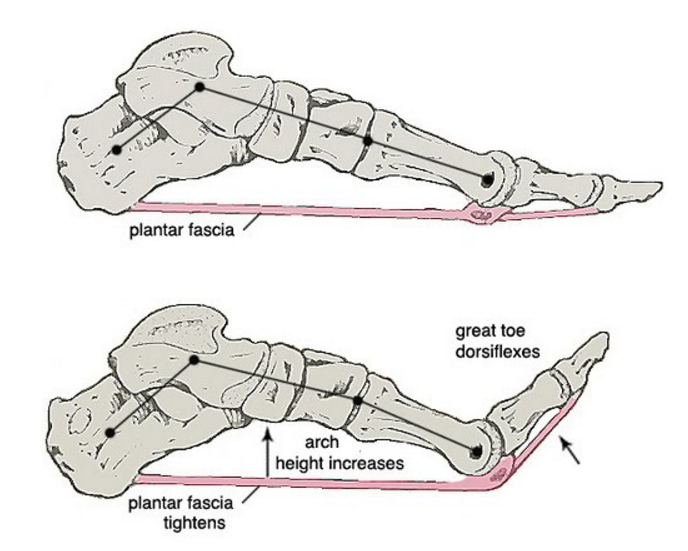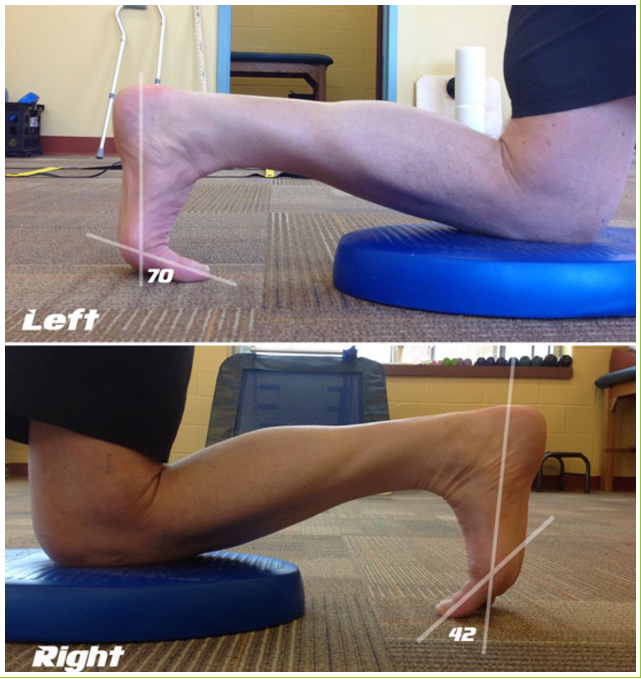Get Back To Painless Running - Stop Heel and Foot Pain!
May 03, 2017
It seems that almost every runner has experienced “plantar fasciitis” at some point. Although there are many stretches and exercises that provide short term relief, it would be best to find out why the bottom of your foot and heel continue to be painful. Sure, there are quite a few factors that could lead to this pain, but what if targeting one joint in your body could change your running and decrease your pain for good?
Your foot is made up of 26 bones and 33 joints. Proper biomechanics of the foot depends on the appropriate strength and mobility of these joints. The great amount of joints allows the foot to conform to the surface so we can walk in the sand at the beach but also through the grass at home. The feet are our foundation; holding all of our body weight and acting as levers to propel us forward in walking and running. It sounds really complicated- and it is- but there is one joint that tends to be overlooked that can significantly impact your foot function. It is the great toe, aka the big toe.
The great toe and its mobility are integral in push-off while running. The function is described by the “windlass mechanism.” Essentially, the great toe extends which will tighten the plantar fascia. The tightening of the fascia at the bottom of our foot elevates your arch and keeps the foot from collapsing so that you can effectively push off at each stride.

Without full great toe extension, it will be difficult to allow your weight to advance forward over your foot as you run. Thus, your biomechanics will change. Our body is amazing because it will change and adapt to decrease pain but sometimes these changes are not ideal for long term. Some ways your body will find to get around lack of great toe extension is running with your feet externally rotated (toes out) or taking much shorter stride lengths to decrease the pressure at the toe. Long-term changes in running form can begin to effect other joints up the chain- knees, hips, back. The plantar fascia may experience more tension as the toe becomes even more stiff which then can manifest as heel, toe or general foot pain.
What does your great toe extension look like?
One way to check your great toe extension is in a relaxed position as in the picture below. Your foot may be resting on a surface and push your great toe up gently until you feel resistance or discomfort.
Checking great toe extension in a lunge position will be more similar to running and the toe can be pushed back passively by the ground. In the photo below, notice that the left toe extends much further than the right. Ideal range of motion is about 70 degrees of extension, though some people may have more!

If you find that your great toe extension is lacking, try these self-mobilizations at home. Working on these before and/or after a run would be ideal. Spend a few minutes on each mobilization and see how your feet feel:
If you have restriction, 2 min each day of this mobilization can start to chip away decreased mobility.
https://www.youtube.com/watch?v=EOJPKu7DUfU
Using a lacrosse ball, spend 2-3 min each day on the fascia at the bottom of your foot.
As we mentioned before, great toe limitations can greatly affect your biomechanics. Factors such as stride length, foot contact, hip and knee position through swing can each be altered with foot restrictions and pain. At Athletes’ Potential, we perform a Run Form Analysis for our athletes to break down their form individually and change any deviations we may see. Even if you don’t have pain currently, having a professional break down your run form can be eye-opening and help prevent speed bumps in training down the road.
We're excited to help you stay active and get back to your training!
Thanks for reading,
AP Team
Let us help you figure out to live your best active life today!
Remember, Movement is Medicine!

